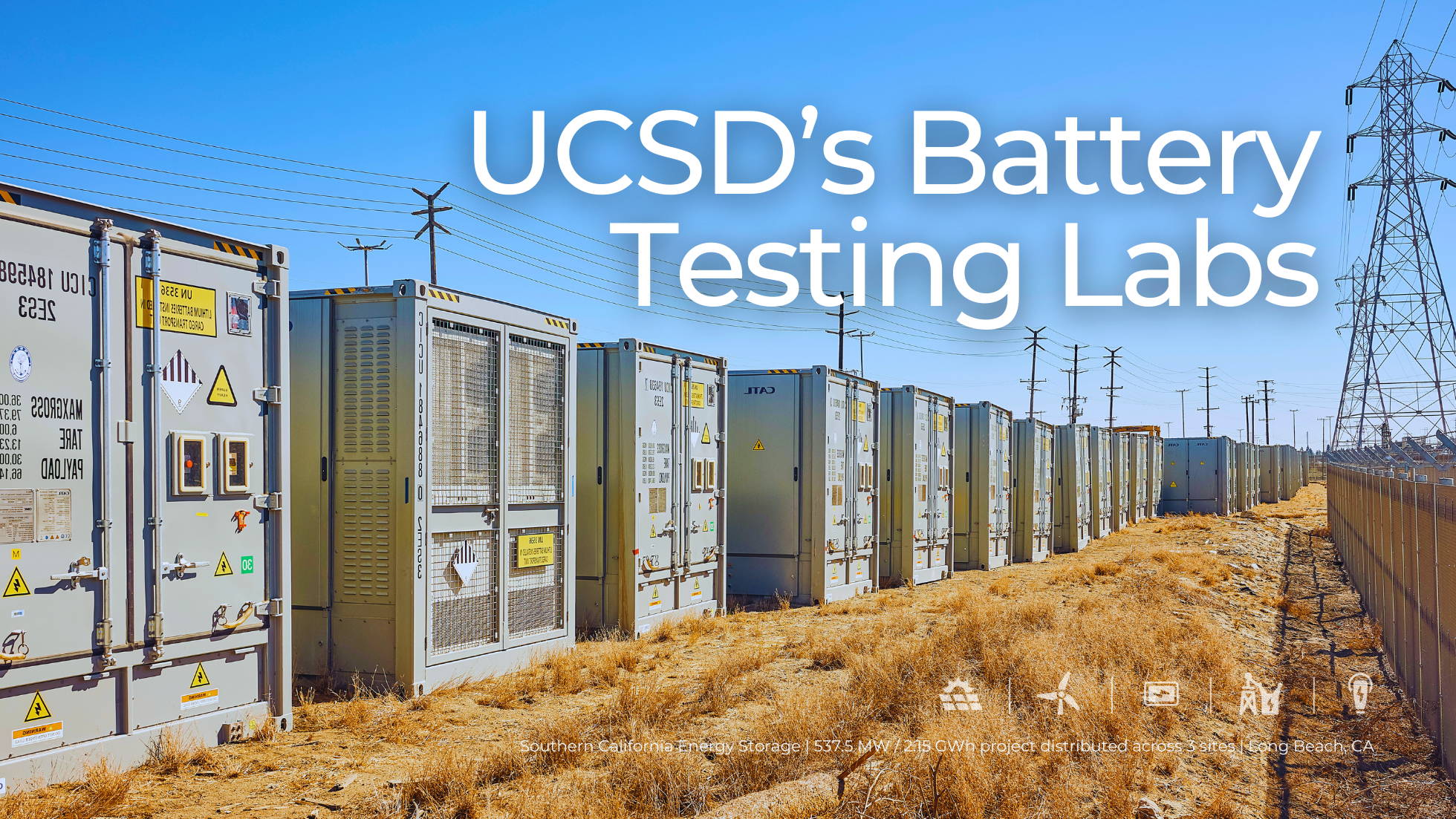Constructing Data Centers that Power Artificial Intelligence (AI) Learn More
UC San Diego’s Battery Testing Labs

With a growing focus on clean energy transformation, academic institutions nationwide are researching new approaches to energy conservation and renewable energy solutions. One notable example is an advanced battery testing ecosystem developed by UC San Diego that’s playing a key role in driving innovation in energy storage.
UCSD is clearly positioning itself as a leader in energy storage research. Through its cutting-edge laboratories and partnerships, the University is doing real-world testing using data-driven duty cycles to enhance battery performance for practical energy applications. This work is making an important contribution toward advancing battery technology, supporting second-life applications, and optimizing grid energy storage solutions.
UC San Diego’s leadership in energy storage research is exemplified through initiatives at both the Laboratory for Energy Storage and Conversion (LESC) and the Center for Energy Research (CER). While LESC focuses on developing new materials for advanced storage solutions, CER specializes in testing and validating energy storage systems within real-world applications, such as the University’s microgrid. Together, these efforts highlight the University’s comprehensive approach to addressing energy storage challenges.
The UCSD battery validation lab
This lab, which is managed by the Center for Energy Research (CER) and integrated with the University’s microgrid, provides testing capability for up to 10 battery systems (100V/100A per system) as well as resources for ventilation, hydrogen/smoke detection, fire suppression, and chemical safety protection. The facility also has resources to evaluate various behind-the-meter energy storage services, distributed energy resource (DER) usage, and wholesale market participation applications.
UCSD has developed five energy storage application duty cycles:
- energy time shifting
- demand charge management
- congestion relief
- flexible ramping
- frequency regulation, using data from the California ISO and local utility rates
These testing duty cycles help determine battery performance under realistic applications instead of general charge/discharge cycles. They also provide insights into the energy storage system’s economic benefits. In addition, the University is developing innovative solutions for second-life batteries to continually improve system safety, reliability, and overall value.
A complete EPC partner for energy storage solutions
“Given our extensive involvement in the design, engineering, and construction of BESS installations, BEI is continually on the lookout for new developments like these to drive the future of energy storage and renewable solutions,” says Gary Chelini, Principal, BEI Construction.
“The future of clean energy depends on the success of energy storage innovation,” adds David Zetterlund, General Manager, BEI Construction. “We applaud the groundbreaking work that UCSD is doing in this area and are closely monitoring the progress of their initiatives.”